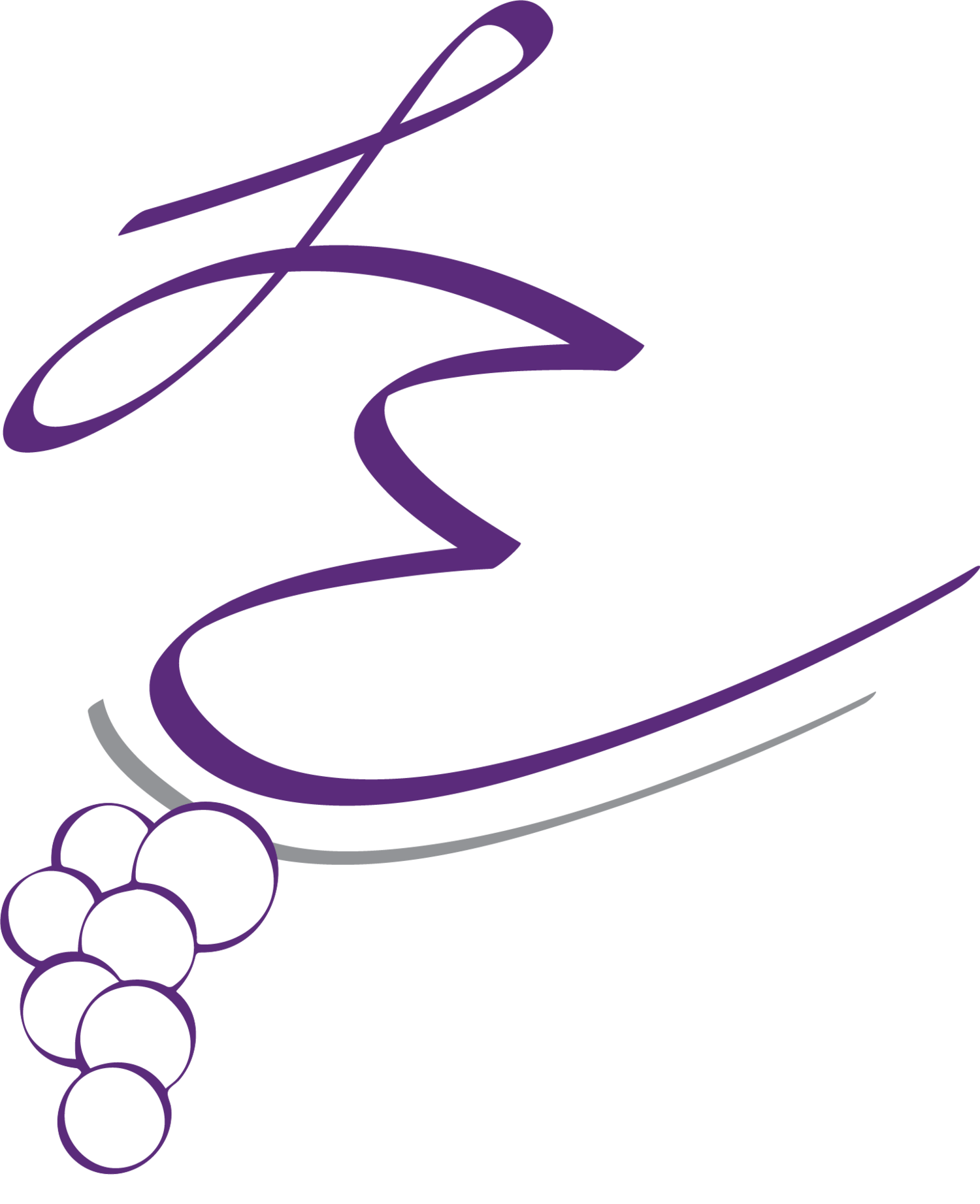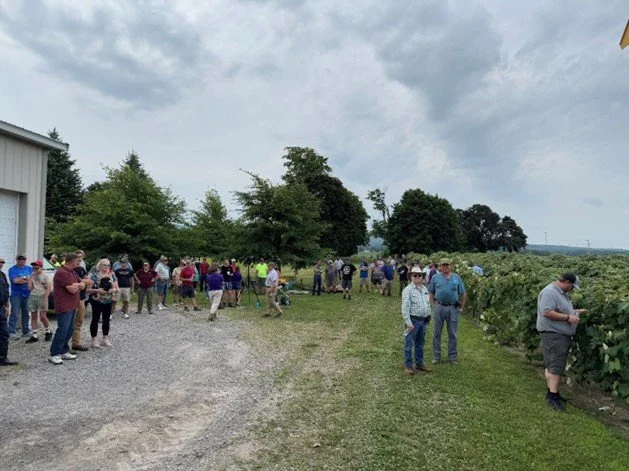July 17, 2025
Written by Jennifer Phillips Russo
The Lake Erie Regional Grape Program and the Cornell Lake Erie Research and Extension Laboratory research staff held our Crop Estimation and Fruit Thinning Demonstration Day on July 16, 2025, from 9 AM-12 PM.
Dr. Terry Bates, Jennifer Phillips Russo, and the Viceroy Butterfly that was interested in attending.
Dr. Terry Bates and I were prepared to discuss the importance of crop estimation and, if warranted, fruit thinning techniques to bring your vineyard into balance and for sustainable grape production. To achieve vine balance, it’s essential to understand the intricate dynamics between vine growth, yield expectations, and business decisions. A balanced vineyard is one where the vegetative growth (leaves) and fruit production (grapes) are in equilibrium, or in a state where vine resources are efficiently used for vine growth and fruit maturation. This event’s attendance surpassed our expectations. There was standing room only in our conference room with over 75 in attendance.
A balanced viticulture model is crucial. Season-to-season fluctuations can upset the overall health of a vineyard, as we saw in 2024. We touched on how last year’s frost created unexpected fluctuations, prompting the need for strategies to balance out these effects of vines that were unbalanced in 2024, with low yields. This demonstration day started inside, classroom-style, where we walked growers through the crop estimation process, discussed how to utilize either the Crop Estimation Guide and Table or Dr. Terry Bates’ Concord Crop Estimation Calculator, answered grower questions on how-to or why, and discussed fruit thinning decision making and techniques. It was our intention to aid growers in adopting a forward-thinking mindset that prioritizes consistent vine health and uniform yields will not only stabilize profits but also foster sustainable practices in viticulture.
Terry and I discussed the importance of fruit thinning in vineyards, particularly for overcropped vines. Terry explained that thinning involves carefully removing fruit to balance vine growth and improve fruit quality. He emphasized that proper machine setup and gentle handling are crucial to avoid damaging vines. We discussed different types of harvester machines and ways of achieving a gentle and effective approach to remove fruit and bring vines into a more balanced state. Dr. Bates outlined that accurate crop estimation involves two key aspects: properly estimating crop on sample vines by clean picking and weighing fruit at 30 days after bloom (or using the calculator to input how many days after bloom that you clean picked), and reminded the attendees that if the end goal is to remove 3 tons/acre of mature fruit, that you only need to remove 1.5 tons/acre at 30 Days After Bloom (DAB) because the berries are at half of their final berry weight at that time. Terry emphasized that balanced Concord and Niagara vines should maintain a Ravaz index between 10-15 for balanced vines. Please watch the recorded video below if you missed this outreach event or if you would like to refresh the information that was presented. After the classroom-style discussion, attendees walked into our research vineyards to watch a crop estimation demonstration, followed by how to dial in your harvester and thinning technique to obtain the results that meet your individual goal. It was our hope to demonstrate these techniques, encourage attendees to try them in their blocks, and reach out with questions. Click Here to View Recording of Classroom Portion of the Meeting.
If anyone is interested in learning more about the information that was presented during this Crop Estimation and Fruit Thinning Demonstration Day, please reach out, and we will gladly provide more information.
Classroom-style presentation before outdoor demonstration
Crowd gathering to witness the crop estimation and fruit thinning demonstration
Dr. Terry Bates demonstrates crop estimation techniques




